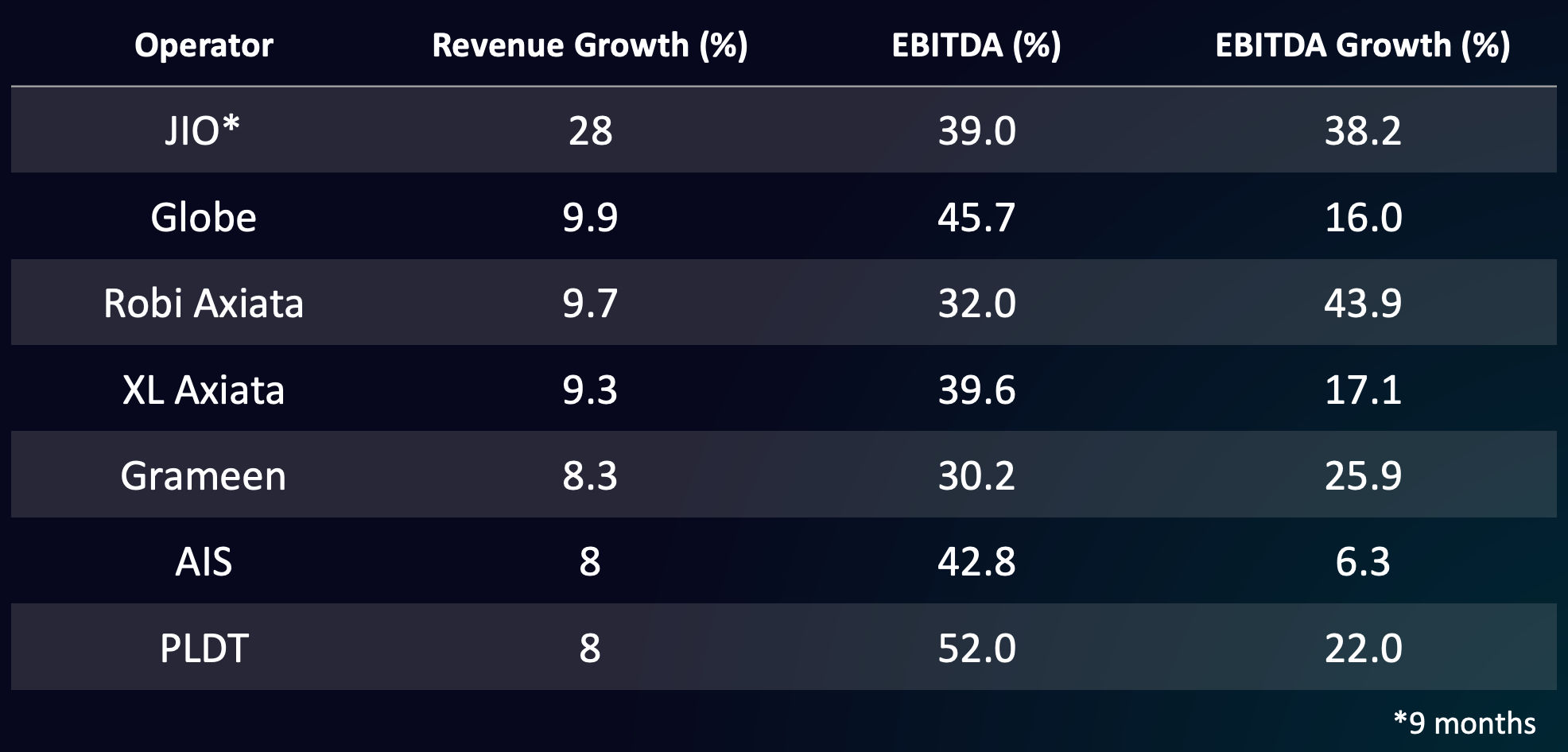Watch the Future of Telecoms in Asia event here:
Telecoms today are building the paradigm-shifting engine of 5G connectivity. It will power Industrial Revolution 4.0 and our AI-based economy of the future. Between 2019 and early 2020, telecom companies in Asia Pacific have been busy exploring new business offerings, technologies and partnerships. These developments, particularly in countries like; South Korea, Singapore, India, Japan and Thailand, have been particularly noteworthy.
Burgeoning APAC Telecom Companies
South Korean SK Telecom launched a nationwide 5G network that dominated the country’s 5G market, securing 2.08 million 5G subscribers. Whereas in Singapore, telecom operators are competing for one of two nationwide 5G network licenses. Singtel (with 42% broadband market share), is predicted by pundits to win one of two licenses. This has consequently led StarHub and M1 to team up to jointly bid for the other available license.
In India, regulators and the legal system have challenged telco operators Vodafone, Airtel and Tata to backpay years of license fees, totalling US$13 billion. This pressure may cause companies like Vodafone Idea to face potential bankruptcy, leading to an unfavourable duopoly situation between the other two major Indian operators. As a result, this could deter foreign investors who are needed to finance improvements to the country’s internet infrastructure.
In Japan, Rakuten, an e-retailer has broken ground with its US$28 price plan for unlimited data (less than half the price of its competitors NTT Docomo, KDDI and SoftBank). The success of Rakuten’s low-price play will likely be contingent on customer satisfaction with their service. Its success will demonstrate to the market that they need to adapt and compete at this level, as customers are drawn to an affordable offering that can yield the same experience.
Lastly, Thailand’s recent completion of its 5G spectrum auction raised US$3.2 billion. The country may very well be one of the first Southeast Asian countries to roll out 5G commercially, followed by Singapore, Vietnam and the Philippines.
Global Trends

Revenues for global communications, connectivity and managed services for operators have been flat, at an average of +1-2%. However, their EBITDA margins have improved by +2-3%, by virtue of optimising CapEx and costs. Developed economies have seen intense competition in recent years, although top line revenue has not grown significantly. Whereas in developing economies, the opportunity for growth is still substantial.
Top Telecom Performers in APAC
The companies above have shown successful revenue growth within APAC’s emerging markets. The growth in mobile data has been the key driver of revenue and EBITDA growth. All of these companies have also made significant foray into the media / content business through partnerships and in some instances investment in greenfield projects. While these have yet to contribute in any meaningful way to current performance, companies such as Reliance JIO and Globe deserve a special mention for their ambitions to grow this segment.
SK Telecom: A Case Study
We would like to specifically call out SK Telecom as a trend setter and best practice case study of the strategy that telecom companies could adopt for their future growth.
SK Telecom is South Korea’s leading mobile carrier and a pioneer of every generation of mobile network in the country, with a market share of nearly 50%. In what is a bold move, they view their business in two distinct categories.
- Mobile Network Operator (MNO) – their traditional telecom business and
- New ICT Business: Media, Security and Commerce – their new growth engines.
This categorization helps ensure the focus on the growth segments. In 2019, the MNO division has seen 2.5% y-o-y growth, currently sitting at KRW11,416.2 billion (US$9.34 billion) in revenue. Whereas, revenue for the ‘New ICT Business’ division was KRW5,126.6 billion (US$4.19 billion); this comparatively lower revenue contribution to the company does however have a y-o-y growth of 21.6%, indicates its vast potential.
Additionally, security is a very important pillar and growth opportunity for every telecom company. SK Telecom’s Security division is now close to US$900 million in revenue. It is growing at 17% y-o-y, while its Media division is growing at 10% y-o-y; its Commerce business, 11street, established in 2008, turned profitable in 2019.
Two factors attributed to the growth of SK Telecom:
- Segmenting the business
- Creating strategic partnerships
Partnerships
SK Telecom has practiced a critical growth strategy: the ability to partner and create synergies in those partnerships. It has partnered with a range of companies to not only harness the value of what those other companies will bring, but to leverage on expertise that SK Telecom may not have, to serve and grow each of those businesses.
- SK Telecom has partnered with the three largest terrestrial TV broadcasters in South Korea –Korean Broadcasting System (KBS), Munhwa Broadcasting Corporation (MBC) and Seoul Brodcasting System (SBS) to help set up Wave, a leading streaming company for the country.
- To develop new 5G-based services, SK Telecom has also partnered with Kakao, South Korea’s most popular messenger app. SK Telecom now owns a 2.5% stake in Kakao, while Kakao owns a 1.6% stake in SK Telecom.
- Through various partnership engagements, SK Telecom has partnered with Comcast, a US media giant. Together, they will form a global eSports company called SK Telecom CS T1, where SK Telecom holds 55% equity stake. The venture in total is worth around US$92 million.
SK Telecom is an innovative telecom company that has moved in directions that other operators could stand to learn from. Its strategic partnerships and ventures into new businesses complement the technologies SK Telecom is developing. Going forward, this will secure its position as a strong regional telecom leader, transforming itself into an IT Synergy Company.
Twimbit Insights
- As engineers of our 5G network infrastructure, telecom companies are truly the underlying enablers for all the technologies to come as we reach towards realizing the full potential of Industrial Revolution 4.0.
- Enterprises stand to be transformed the most with 5G, as they can elect to have large amounts of data going on the cloud enabling higher-quality decision-making thanks to big data processing.
- In the run-up to 5G, the most promising avenue for growth in the telecom space is to create value through differentiation, whether through pricing, or through offering packages aimed at specific market segments that boast synergized access to software solutions or media content.
- To create differentiation, telecoms will have to identify unmet needs and establish partnerships with companies that can contribute the expertise and the other elements needed for the different offerings.
- If the successful example of SK Telecom were to be followed, we can expect to see more of these partnerships being announced as telecoms strive to go above and beyond to give customers what they want.
Learn more about key trends and opportunities from the Future of Telecoms in Asia report.

